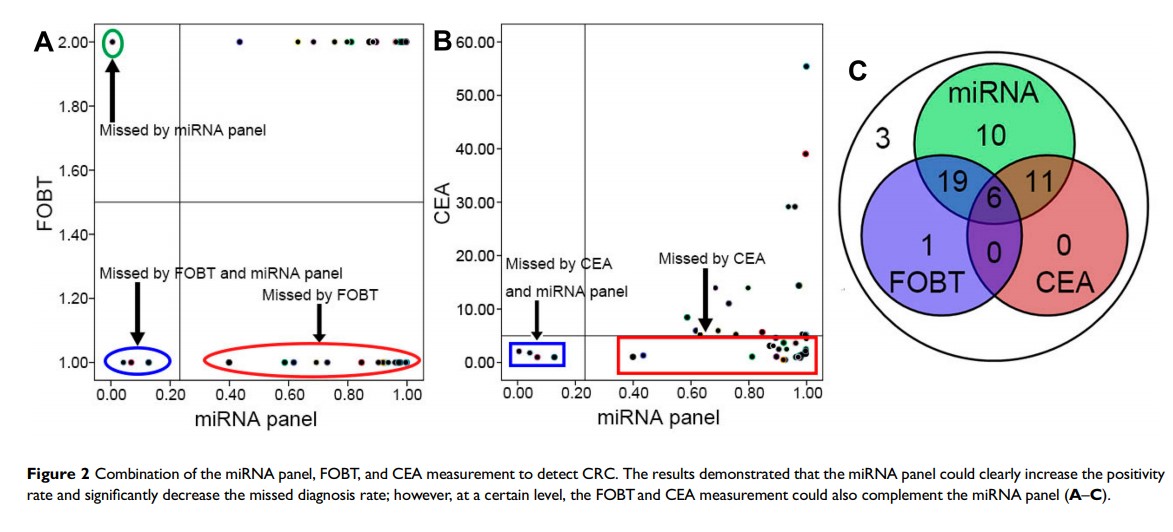9 0 8 1 0
论文已发表
注册即可获取德孚的最新动态
IF 收录期刊
- 2.6 Breast Cancer (Dove Med Press)
- 3.9 Clin Epidemiol
- 3.3 Cancer Manag Res
- 3.9 Infect Drug Resist
- 3.6 Clin Interv Aging
- 4.8 Drug Des Dev Ther
- 2.8 Int J Chronic Obstr
- 8.0 Int J Nanomed
- 2.3 Int J Women's Health
- 3.2 Neuropsych Dis Treat
- 4.0 OncoTargets Ther
- 2.2 Patient Prefer Adher
- 2.8 Ther Clin Risk Manag
- 2.7 J Pain Res
- 3.3 Diabet Metab Synd Ob
- 4.3 Psychol Res Behav Ma
- 3.4 Nat Sci Sleep
- 1.9 Pharmgenomics Pers Med
- 3.5 Risk Manag Healthc Policy
- 4.5 J Inflamm Res
- 2.3 Int J Gen Med
- 4.1 J Hepatocell Carcinoma
- 3.2 J Asthma Allergy
- 2.3 Clin Cosmet Investig Dermatol
- 3.3 J Multidiscip Healthc

在结直肠癌筛查中综合使用 miRNA、CEA 检测和 FOBT 的诊断价值
Authors Li X, Chen R, Li Z, Luo B, Geng W, Wu X
Received 17 November 2019
Accepted for publication 14 February 2020
Published 15 April 2020 Volume 2020:12 Pages 2549—2557
DOI https://doi.org/10.2147/CMAR.S238492
Checked for plagiarism Yes
Review by Single-blind
Peer reviewer comments 2
Editor who approved publication: Professor Rudolph Navari
Introduction: Colorectal cancer (CRC) is one of the most common illnesses that seriously threatens human health; many papers have reported that microRNAs (miRNAs) are promising biomarkers for cancer detection. However, miRNAs have not been used in clinical practice even though they are superior to the currently used screening tools, such as the fecal occult blood test (FOBT) and carcinoembryonic antigen (CEA) measurement.
Methods: In this study, we focused on the usefulness of a panel of miRNAs and the combination of miRNAs with the FOBT and CEA measurement, the currently used general diagnosis methods, to improve the accuracy of CRC diagnosis.
Results: The results showed that the miRNA panel has great potential value as a diagnostic biomarker with high specificity and sensitivity, and further analysis demonstrated that the miRNA panel had higher sensitivity and specificity than the FOBT and CEA measurement, even when these methods were combined. More importantly, although the miRNA panel is superior to the FOBT and CEA measurement, it cannot replace them.
Conclusions: In this research, we investigated whether complementarity exists between the miRNA panel and the FOBT and CEA measurement for CRC diagnosis. Interestingly, the results indicated that the FOBT and CEA measurement could improve the positivity rate of the miRNA panel as a biomarker and vice versa.
Keywords: microRNAs, colorectal cancer, biomarker
